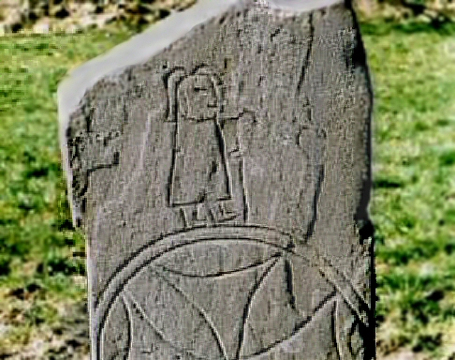
The Character of Irish Christianity
Whenever Christianity penetrates a country it expresses itself in the language of that country and, as appropriate, in the culture and customs of that country. This has always been so, first with Jewish Christianity and then with Greek, Syrian, Latin and all other consequent cultures. It will always be like this. Christianity in Ireland is no different.
Ireland was never within the Roman Empire and never had the cities, the architecture, law, nor the administration connected with that empire. At the same time Ireland drew from the Empire through trade and settlement.
Given the war-like nature of many societies where the Gospel went it was always something of a miracle that the church made any headway at all. On the other hand, Ireland, in contrast to Britain and the Continent, was relatively peaceful during the years 500-750. This allowed Ireland to develop its own response to the Gospel and create a distinctive Christian culture which could rival any.
The first 100 years saw an explosion of church growth, and in particular, of monastic life. As a result, the administration of the church at this period seems to have included not only bishops but also, in some places, abbots. This can be explained by the largely tribal structure of Irish society in which tribal chiefs donated land for monasteries and the abbots appointed by them were still to a degree controlled by those chiefs. There was no other known alternative social ‘mechanism’ for them to use.
What organisation Ireland had was rural. Its basis lay in the extended family. A family might live in isolated farmsteads, with ditches and banks to defend them. Several extended families formed a clan, or unit, of a tribe; and the units of a tribe, within a hierarchy, formed a miniature kingdom. Lesser kingdoms would be beholden to larger ones.
It was a life spent very close to nature. Each clan had its warriors, druids and slaves. Neighbouring tribes were often blood related. There was no political unity and no central administration. The main occupation was cattle-breeding, the main sport cattle raiding. They were always fighting. Violence and blood were part of their culture.
The Irish however took Christianity to heart. One indication of this is the absence of martyrs. Christianity spread from tribe to tribe through their tribal leaders. The existing religious culture — that of the Celts — was well suited to receive the Gospel. The tribe would let members become monks rather than, as previously, druids. Monks remained part of the tribe. The tribe helped the monks and often the monastery would become the focal point of a village. Children would be educated in the monastery.
However the Irish church was always a Western church which, appropriately, always looked eastwards to its centre in Rome, for whatever its need. The church was never other than Orthodox in its belief and practice. The teaching of Pelagius, a Briton, seems mainly to have been developed by him in Europe. The use of the word ‘Celtic’ is a modern anachronism; there never was an ‘independent’ church under this name. Such wishful thinking stems from the dynamics of later controversies. At the time of which we speak Rome had not developed a highly organised and centralised machinery and churches in places like Ireland had their own customs which they had partly derived from Rome and which they developed in their own way, often lagging behind other countries.
In spite of the physical harshness of their lives (and in spite of the later make-over showing them as fierce men of power), Irish saints manifest a great spirit of gentleness as a result of the grace of God upon them. They had a strong sense of creation as the gift of God, and a strong awareness of the supernatural, and of the communion of saints. Monasteries and hermitages were often founded in astonishingly beautiful places. The Sea Islands and Lough Islands furnished such places in abundance
The Irish were well-known for penances. This was not a means of striving, but of expressing sorrow and making for surrender to produce profound change. Their aim was purity of heart. The penances were not public, nor were they harsh. They were private, personal and moderated, undertaken with the advice of a spiritual father (or ‘soul-friend’) who knew the monk intimately. This relationship shows the human and intimate side to their spirituality.
Most of the early Irish monks and bishops were regarded as saints, as was usually the case elsewhere. After the saints were their relics. With the relics came the need to ‘house’ them. Stone churches may first have been built for this purpose from the 8C onwards, often copying the form of their wooden predecessors.
After the relics came pilgrims. Much of what we see today is probably due to the rise of pilgrimage including the High Crosses and Round Towers.
With the pilgrims came saints’ ‘Lives’. These ‘lives’, often written much later than the time when the saint had lived, reflect the desire to see the saints as those who were like Christ and did the things Christ did; in turn this reflects the need to have the saints as patrons and intercessors. Today we prefer to see the saints as they were in history.
See:
- Hamlin A and K Hughes, The Modern Traveller to the Early Irish Church, Four Courts Press 1997;
- P Harbison, Pilgrimage in Ireland, Syracuse University press 1992.